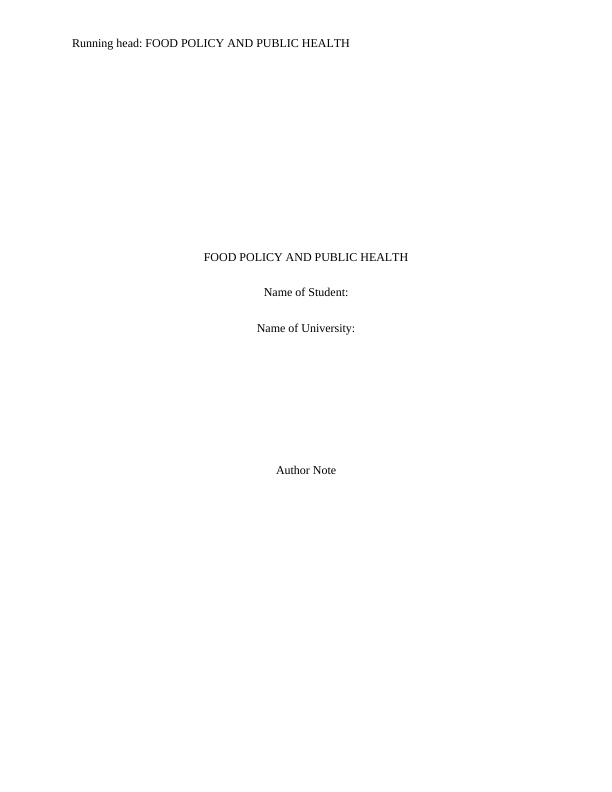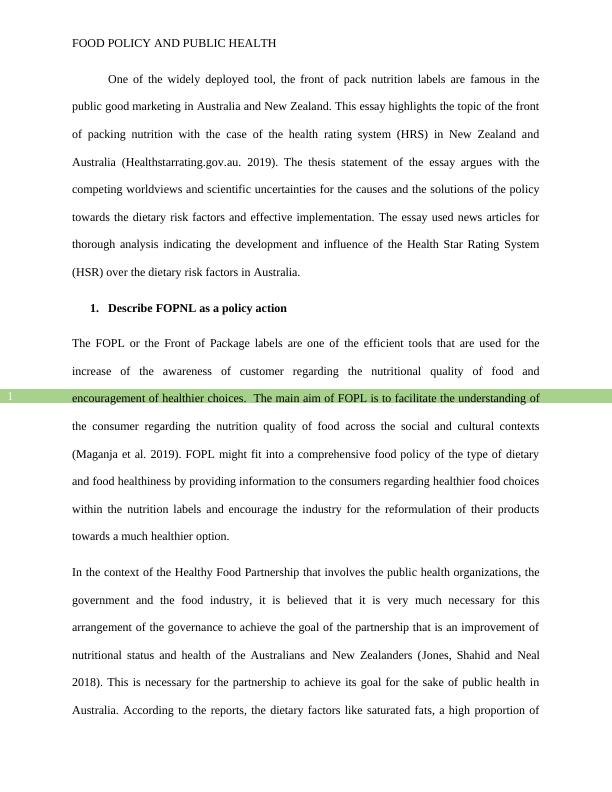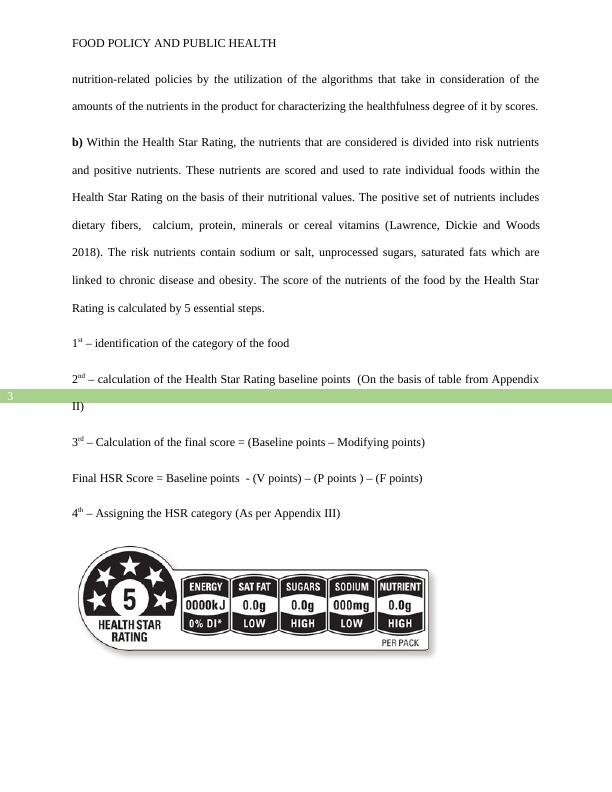Food Policy and Public Health Assignment 2022
Assignment 2 is a critical analysis of policy-making for a topical food policy action. The assignment focuses on front-of-pack nutrition labelling (FOPNL) with the case study of the Health Star Rating (HSR) system in Australia and New Zealand. The assignment assesses students' ability to demonstrate application of knowledge and skills covered in the unit, including describing FOPNL as a policy action, examining the HSR system, analyzing competing worldviews, and discussing strengths, weaknesses, and future priorities for revision.
Added on 2022-10-11
Food Policy and Public Health Assignment 2022
Assignment 2 is a critical analysis of policy-making for a topical food policy action. The assignment focuses on front-of-pack nutrition labelling (FOPNL) with the case study of the Health Star Rating (HSR) system in Australia and New Zealand. The assignment assesses students' ability to demonstrate application of knowledge and skills covered in the unit, including describing FOPNL as a policy action, examining the HSR system, analyzing competing worldviews, and discussing strengths, weaknesses, and future priorities for revision.
Added on 2022-10-11
End of preview
Want to access all the pages? Upload your documents or become a member.




